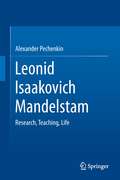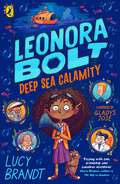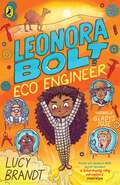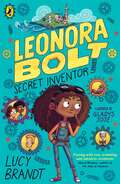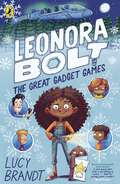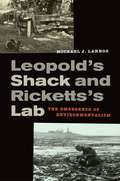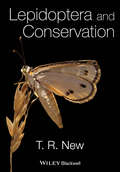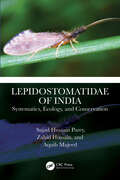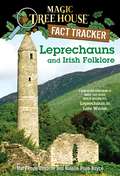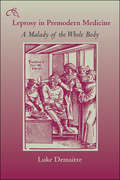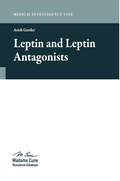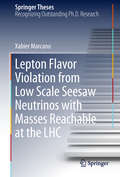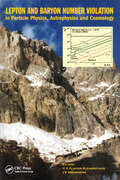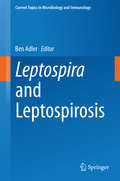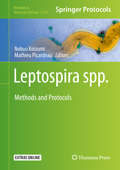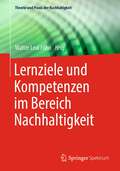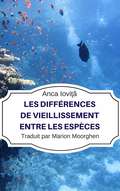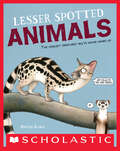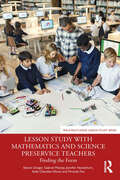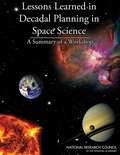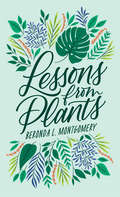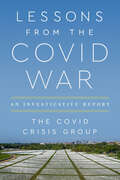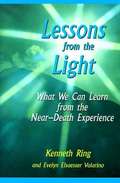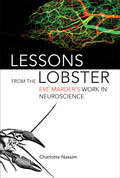- Table View
- List View
Leonid Isaakovich Mandelstam
by Alexander PechenkinThis biography of the famous Soviet physicist Leonid Isaakovich Mandelstam (1889-1944), who became a Professor at Moscow State University in 1925, describes his contributions to both physics and technology, as well as discussing the scientific community which formed around him, usually called the Mandelstam school. Mandelstam's life story is thereby placed in its proper cultural context. The following more general issues are taken under consideration: the impact of German scientific culture on Russian science; the problems and fates of Russian intellectuals during the revolutionary and post-revolutionary years; the formation of the Soviet Academy of Sciences; and transformation of the system of higher education in the USSR during the 1920's and 1930's. The author shows that Mandelstam's fundamental writings and his lectures notes allow to reconstruct his philosophy of science and his approach to the social and ethical functions of science and science education. That reconstruction is enhanced through extensive use of hitherto unpublished archival material as well as the transcripts of personal interviews conducted by the author.
Leonora Bolt: Deep Sea Calamity (Leonora Bolt: Secret Inventor #2)
by Lucy BrandtTHE SECOND LAUGH-OUT-LOUD ADVENTURE FOR LEONORA BOLT, SECRET INVENTOR.'Fizzing with fun, friendship and fabulous inventions!' - Maria Kuzniar, The Ship of Shadows Leonora isn't supposed to be building a submarine in a tree. Or turning the local wildlife luminous. In fact, she is supposed to be keeping her head down and drawing no attention - because Leonora Bolt is an inventor in secret.But she can't stop thinking of the clues she found to her missing parents' location. So, deep in hiding in Snorebury, desperately trying to avoid being discovered by her evil uncle, Leonora is hatching a plan.So what if involves launching a homemade submarine into the middle of the ocean, accompanied only by a couple of friends and an otter with particularly sensitive whiskers? For when disaster strikes, Leonora's wackiest plan might just be her most brilliant yet...
Leonora Bolt: Eco Engineer (Leonora Bolt: Secret Inventor #3)
by Lucy BrandtBook 3 in the LEONORA BOLT: SECRET INVENTOR seriesLeonora Bolt makes amazing gadgets from any old junk. And her inventions have already stopped villainous Uncle Luther TWICE, though she hasn't rescued her super-scientist parents from him - yet.Leonora and her pals find clues that lead them to Luther's latest evil plan. It's an amusement park called Brightworld built in a desert, under a massive snow globe - and it's terrible for the environment!But when all their fancy-pants gadgets fail in the hot-hot heat, it's down to Leonora to use her eco-engineering imagination. Can she invent something to shut down Brightworld and save her parents - before there's a meltdown?With nothing but courage and Leonora's trusty tool belt to hand, the gang must battle swirling sandstorms, navigate plunging canyons and finish Uncle Luther...FOD GOOD!Praise for LEONORA BOLT:'A hilariously silly adventure' - The Guardian'Fizzing with fun, friendship and fabulous inventions!' - Maria Kuzniar, author of The Ship of Shadows'A joyous story' - i
Leonora Bolt: Secret Inventor (Leonora Bolt: Secret Inventor #1)
by Lucy Brandt'Fizzing with fun, friendship and fabulous inventions!' - Maria KuzniarWARNING: EPIC INVENTIONS AND SECRET SOCIETIES AHEAD . . .Leonora Bolt spends her days creating incredible inventions in her TOP SECRET laboratory, under the watchful eye of her terrifying uncle.Everything changes one day when a strange boy washes up on an inflatable lobster and reveals that Uncle Luther has been stealing her inventions and selling them on the mainland. Leonora, armed with her most important inventions, must leave Crabby Island for the first time EVER to embark on an unforgettable journey that will test her brainpower to its limits.With the help of an otter with a special skilll, a questionable cook and a singing sea captain, can Leonora dream up an invention that will defeat her evil uncle once and for all?Violet Baudelaire meets Peanut Jones in this epic STEM-themed adventure about believing in your brainpower - and yourself!
Leonora Bolt: The Great Gadget Games (Leonora Bolt: Secret Inventor #4)
by Lucy BrandtThe fourth hilarious book in the brilliant STEM adventure series Leonora Bolt. With glorious illustrations by Gladys Jose throughout.It's Leonora first Christmas, and the brilliant young inventor is feeling festive! She's made presents, Mildred's boiling cabbage for the candy canes (yuck!), and best friend Jack's brought along . . .an invite to the Great Gadget Games?!Her villainous Uncle Luther is behind this new inventing show, and planning on stealing the creations made by the very talented contestants. And in ANOTHER twist, the judges of the competition are two people very dear to Leonora's heart.Leonora HAS to enter - it's her best-ever chance to finally stop Luther's dangerous games! But she can't enter as herself - he'll never allow that - so she'll need a foolproof disguise, and a brilliant idea for a winning invention . . .Violet Baudelaire meets Peanut Jones in this epic STEM-themed adventure about believing in your brainpower - and yourself.
Leopold’s Shack and Ricketts’s Lab: The Emergence of Environmentalism
by Michael J. LannooAldo Leopold and Ed Ricketts are giants in the history of environmental awareness. This illuminating book reveals the full extent of their profound and parallel influence both on science and our perception of natural world today.
Lepidoptera and Conservation
by T. R. NewThe third in a trilogy of global overviews of conservation of diverse and ecologically important insect groups. The first two were Beetles in Conservation (2010) and Hymenoptera and Conservation (2012). Each has different priorities and emphases that collectively summarise much of the progress and purpose of invertebrate conservation. Much of the foundation of insect conservation has been built on concerns for Lepidoptera, particularly butterflies as the most popular and best studied of all insect groups. The long-accepted worth of butterflies for conservation has led to elucidation of much of the current rationale of insect species conservation, and to definition and management of their critical resources, with attention to the intensively documented British fauna ‘leading the world’ in this endeavour. In Lepidoptera and Conservation, various themes are treated through relevant examples and case histories, and sufficient background given to enable non-specialist access. Intended for not only entomologists but conservation managers and naturalists due to its readable approach to the subject.
Lepidostomatidae of India: Systematics, Ecology, and Conservation
by Zahid Hussain Sajad Hussain Parey Aquib MajeedThis reference book comprehensively delves into the systematics, taxonomy, morphology, ecology, and behaviour of the Lepidostomatidae (Trichoptera) in India. The chapters cover biogeography and distribution patterns, conservation status, functional traits, and management of Lepidostomatidae. The book also provides insights into the morphological and molecular techniques employed for identification, allowing for a deeper understanding of the intricate characteristics that define the caddisflies. The work examines detailed methods for the collection, preservation, and identification of Lepidostomatidae specimens. It also examines the threats faced by Trichoptera, particularly Lepidostomatidae, and sheds light on the challenges that endanger their survival in the current scenario of climate change.Features: Covers biogeography, distribution patterns, and conservation status of Lepidostomatidae in India Focuses on functional traits and management strategies of Lepidostomatidae caddisflies Provides insights into morphological and molecular techniques for accurate identification of Lepidostomatidae caddisflies Provides methods for collection, preservation, and identification of Lepidostomatidae specimens Explores the crucial roles Lepidostomatidae in aquatic ecosystems Examines threats and challenges endangering the survival of Trichoptera, including Lepidostomatidae In the final section, the book explores the crucial roles Lepidostomatidae played in aquatic ecosystems. This book is useful to upper undergraduate and graduate students, academicians, and researchers of entomology, zoology, and environmental sciences.
Leprechauns and Irish Folklore: Leprechaun in Late Winter (Magic Tree House (R) Fact Tracker #21)
by Mary Pope Osborne Sal Murdocca Natalie Pope BoyceThe #1 bestselling chapter book series of all time celebrates 25 years with new covers and a new, easy-to-use numbering system! Getting the facts behind the fiction has never looked better. Track the facts with Jack and Annie!! <P><P> When Jack and Annie got back from their adventure in Magic Tree House Merlin Mission #15: Leprechaun in Late Winter, they had lots of questions. What are leprechauns? How do we know many of the old Irish stories? How do fairies spend their time? Who speaks the Irish language? Find out the answers to these questions and more as Jack and Annie track the facts. Filled with up-to-date information, photos, illustrations, and fun tidbits from Jack and Annie, the Magic Tree House Fact Trackers are the perfect way for kids to find out more about the topics they discovered in their favorite Magic Tree House adventures. And teachers can use Fact Trackers alongside their Magic Tree House fiction companions to meet common core text pairing needs. <P><P> Did you know that there’s a Magic Tree House book for every kid? <P><P> Magic Tree House: Adventures with Jack and Annie, perfect for readers who are just beginning chapter books <P><P> Merlin Missions: More challenging adventures for the experienced reader <P><P>Super Edition: A longer and more dangerous adventure <P><P>Fact Trackers: Nonfiction companions to your favorite Magic Tree House adventures <P><P> Have more fun with Jack and Annie at MagicTreeHouse.com!
Leprosy in Premodern Medicine: A Malady of the Whole Body
by Luke DemaitreWhile premodern poets and preachers viewed leprosy as a "disease of the soul," physicians in the period understood it to be a "cancer of the whole body." In this innovative study, medical historian Luke Demaitre explores medical and social perspectives on leprosy at a time when judicious diagnosis could spare healthy people from social ostracization and help the afflicted get a license to beg.Extending his inquiry from the first century to late in the eighteenth century, Demaitre draws on translations of academic treatises and archival records to illuminate the professional standing, knowledge, and conduct of the practitioners who struggled to move popular perceptions of leprosy beyond loathing and pity. He finds that, while not immune to social and cultural perceptions of the leprous as degenerate, and while influenced by their own fears of contagion, premodern physicians moderated society's reactions to leprosy and were dedicated to the well-being of their patients.
Leptin and Leptin Antagonists
by Prof. Arieh GertlerThe discovery of leptin, the obese (ob) gene product which is not expressed as a functional protein in ob/ob mice, focused the scientific community's attention on its role as an anorexic hormone involved in the negative regulation of food intake. Almost 14 years after this breakthrough discovery and over 14,000 leptin-related publications later, leptin is now known to participate in a wide range of biological functions that include, in addition to its early envisaged function as an adipostat, glucose metabolism, glucocorticoid synthesis, CD4+ T-lymphocyte proliferation, cytokine secretion, phagocytosis, hypothalamic-pituitary-adrenal axis regulation, reproduction, cardiovascular pathology, bone formation, apoptosis and angiogenesis. In short, it is now well-documented that leptin acts like a cytokine hormone with many pleiotropic effects. Furthermore, in recent years, it has become more and more apparent that many of leptin's effects are acquired not only through its central action, but also through its systemic action on a peripheral level. This book focuses mainly on the relatively novel aspects of leptin's actions.Leptin's involvement in early postnatal imprinting has led to new insight into developmental programming. This highly novel aspect of leptin's action is reviewed extensively in the final chapter of this book by the Auckland group, Vickers, Krechowec, Gluckman and Breier. In the last five years, it has been shown that at least in rodents, leptin acts as an important neurotrophic factor promoting the early postnatal maturation of neural pathways within the hypothalamus. The authors review experimental evidence, originating largely from their own work, which shows that therapeutic intervention with leptin in the rodents' early postnatal life can potentially reverse or substantially ameliorate the consequences of developmental malprogramming, and that this effect is highly influenced by both gender and postnatal diet.
Lepton Flavor Violation from Low Scale Seesaw Neutrinos with Masses Reachable at the LHC (Springer Theses)
by Xabier MarcanoFlavor physics is fundamental to test the Standard Model of particle physics and could be the key to discover new physics. This book explores lepton flavor violating implications in the low scale seesaw models, a well-motivated scenario for explaining the still open problem of neutrino mass generation. It studies the lepton flavor violating Higgs decays in depth, developing useful simple expressions for making fast estimations of this observable. It also introduces a new parametrization optimized for the study of lepton flavor violation in these models, showing that high rates could be obtained for Higgs and Z decays if these new heavy neutrinos have masses in the TeV range. Lastly, it goes on to explore the possibility of their production and decay at the Large Hadron Collider through events with two charged leptons of different flavor.
Lepton and Baryon Number Violation in Particle Physics, Astrophysics and Cosmology: Proceedings of the First International Symposium on Lepton and Baryon Number Violation (Lepton-Baryon 98), European Centre for Theoretical Studies (ECT), Trento, Italy, 2
by H V Klapdor-Kleingrothaus I V KrivosheinaBringing together leading researchers from particle physics, astrophysics, and cosmology, Lepton and Baryon Number Violation in Particle Physics, Astrophysics and Cosmology presents reviews of current theoretical ideas, experimental results, and future perspectives in this topical field. The book covers areas related to baryon number (B) and lepton
Leptospira and Leptospirosis
by Ben AdlerThis volume covers all aspects of infection by pathogenic Leptospira species, the causative agents of the world's most widespread zoonosis. Topics include aspects of human and animal leptospirosis as well as detailed analyses of our current knowledge of leptospiral structure and physiology, epidemiology, pathogenesis, genomics, immunity and vaccines. Updates are presented on leptospiral systematics, identification and diagnostics, as well as practical information on culture of Leptospira. Contact information is also provided for Leptospira reference centers. All chapters were written by experts in the field, providing an invaluable reference source for scientists, veterinarians, clinicians and all others with an interest in leptospirosis.
Leptospira spp.: Methods and Protocols (Methods in Molecular Biology #2134)
by Nobuo Koizumi Mathieu PicardeauThis volume looks at all aspects of manipulation of Leptospira spp. from strain isolation to the latest techniques used to study the pathogenesis of leptospirosis. The chapters in this book cover topics such as the procedure to cultivate and isolate leptospires from both clinical and environmental samples; using methods like whole genome sequencing and Matrix Assisted Laser Desorption/Ionization Time of Flight Mass Spectrometry to identify bacterial species; tools for gene inactivation and in vitro and in vivo assays to study the pathogenesis of leptospirosis; and the use of hamsters to evaluate leptospiral virulence and vaccine candidates. Written in the highly successful Methods in Molecular Biology series format, chapters include introductions to their respective topics, lists of the necessary materials and reagents, step-by-step, readily reproducible laboratory protocols, and tips on troubleshooting and avoiding known pitfalls.Cutting-edge and comprehensive, Leptospira spp.: Methods and Protocols is a valuable resource for researchers interested in learning more about this developing field and these fascinating organisms.
Lernziele und Kompetenzen im Bereich Nachhaltigkeit (Theorie und Praxis der Nachhaltigkeit)
by Walter Leal FilhoDas Buch zeigt Ihnen, wie sich Lernziele und Kompetenzen im Bereich Nachhaltigkeit ergänzen und hilft, die komplexe und vernetzte Natur der Nachhaltigkeit besser zu verstehen, und die damit verbundenen Herausforderungen zu erkennen und anzugehen. Dazu gehört auch die Vermittlung von Kenntnissen über die verschiedenen Aspekte der Nachhaltigkeit, wie z. B. ökologische, soziale und wirtschaftliche Aspekte, sowie deren Wechselwirkung miteinander. Darüber hinaus zeigt das Buch auf, wie Sie die möglichen Auswirkungen von Entscheidungen und Maßnahmen auf die Nachhaltigkeit einschätzen und bewerten können. Das Buch beschreibt die Zusammenhänge zwischen Nachhaltigkeit und Lernen. Es wird erörtert, wie Bildung und Lernen im Bereich der Nachhaltigkeit uns helfen können, die natürliche Welt und unsere Beziehung zu ihr zu verstehen und bessere Entscheidungen zu treffen, um unser Leben und die Umwelt zu verbessern. Es untersucht auch die Rolle von Technologie und Bildung im Bereich der Nachhaltigkeit und erkundet, wie Nachhaltigkeit in den Unterricht und das Lernen integriert werden kann. Schließlich enthält das Buch praktische Ratschläge zur Schaffung eines nachhaltigen Lernumfelds und zur Anwendung von Nachhaltigkeit in der Hochschulbildung und in den unteren Bildungsstufen.
Les différences de vieillissement entre les espèces
by Anca IoviţăLe vieillissement est une énigme à résoudre. Ce processus est traditionnellement étudié sur des modèles biologiques tels que les mouches drosophiles, les vers et les souris. Le point commun de toutes ces espèces est leur vieillissement rapide. Elles sont donc parfaitement adaptées aux budgets serrés alloués aux études en laboratoire. C’est également une excellente stratégie à court terme ; après tout, qui a le temps d’étudier des espèces qui vivent plusieurs décennies ? Mais les différences de durée de vie entre les espèces sont bien plus importantes que celles que l’on peut observer en laboratoire. C’est d’ailleurs ce qui m’a poussée à faire des recherches approfondies et à rassembler des études hautement spécialisées dans un livre à la portée de tous. Je voulais trouver la forêt parmi les arbres. Je voulais expliquer les différences de vieillissement entre les espèces de façon logique et facile à comprendre. J’ai écrit cet ouvrage avec cela pour unique but. Quels sont les mécanismes à la base des différences de vieillissement entre les espèces ? J’ai intentionnellement choisi de répondre à cette question dans un langage accessible à tous. La recherche sur le vieillissement est bien trop importante pour être occultée par un jargon scientifique formel. Cet ouvrage n’aurait pas vu le jour sans l’existence du thé vert, des bibliothèques et d’Internet. Le volume de données que j’ai dû éplucher pour répondre à cette question est énorme. Pourtant cet ouvrage n’est pas exhaustif. Il ne s’agit pas d’un manuel académique ennuyeux. J’ai essayé de rendre vivant un sujet qui est d’importance capitale pour l’extension de la durée de vie des êtres humains. Et vous seuls pourrez me dire si j’y suis parvenue. ********** Contents ************** Trouver la forêt parmi les arbres Mieux vaut être fiable Les mathématiques du vieilli
Lesser Spotted Animals
by Martin BrownA hilarious, fact-tastic picture book about the coolest creatures you've never heard of, from the illustrator of the internationally bestselling Horrible Histories.Bison? They're banned! Tigers? Taboo! Say good-bye to the gnu, cheerio to the cheetah, and peace to the panda.The world of Lesser Spotted Animals STARTS HERE!Find out all about the amazing animals you need to know but never get to see, from the numbat to the zorilla, and everything in between. A non-fiction picture book with attitude, Martin Brown's Lesser Spotted Animals combines the humor and verve of books like Dragons Love Tacos and Please Mr. Panda with the informative breadth and gorgeous presentation of non-fiction from Steve Jenkins, Diana Aston, and Jenny Broom.
Lesson Study with Mathematics and Science Preservice Teachers: Finding the Form (WALS-Routledge Lesson Study Series)
by Kelly Chandler-Olcott Sharon Dotger Gabriel Matney Jennifer Heckathorn Miranda FoxThis insightful volume offers an overview of the fundamentals of lesson student practice in US teacher education as well as examples from math and science teacher educators using lesson study in their local contexts. The number of teacher educators using lesson study with preservice teachers is small but growing. This book is aimed at teacher educators who may want to try lesson study in university contexts without the challenge of translating the practice from the K-12 context on their own. In this volume, lesson study is broadly overviewed, attention is given to its constituent steps, and examples of lesson study in preservice contexts are shared. Given the broad array of teacher education program designs, numerous contingencies guide teacher educators in their implementation of lesson study, given their contextual affordances and limitations. The lesson study descriptions and cases in this book will support teacher educators and scholars across subject specialities and geographic lines, as they seek instructional frameworks to advance their pedagogical goals.
Lessons Learned in Decadal Planning in Space Science
by National Research Council Space Studies Board Division on Engineering and Physical Sciences Board on Physics and Astronomy David H. Smith Lewis GroswaldThe National Research Council (NRC) has been conducting decadal surveys in the Earth and space sciences since 1964, and released the latest five surveys in the past 5 years, four of which were only completed in the past 3 years. Lessons Learned in Decadal Planning in Space Science is the summary of a workshop held in response to unforseen challenges that arose in the implementation of the recommendations of the decadal surveys. This report takes a closer look at the decadal survey process and how to improve this essential tool for strategic planning in the Earth and space sciences. Workshop moderators, panelists, and participants lifted up the hood on the decadal survey process and scrutinized every element of the decadal surveys to determine what lessons can be gleaned from recent experiences and applied to the design and execution of future decadal surveys.
Lessons from Plants
by Beronda L. MontgomeryAn exploration of how plant behavior and adaptation offer valuable insights for human thriving. We know that plants are important. They maintain the atmosphere by absorbing carbon dioxide and producing oxygen. They nourish other living organisms and supply psychological benefits to humans as well, improving our moods and beautifying the landscape around us. But plants don’t just passively provide. They also take action. Beronda L. Montgomery explores the vigorous, creative lives of organisms often treated as static and predictable. In fact, plants are masters of adaptation. They “know” what or who they are, and they use this knowledge to make a way in the world. Plants experience a kind of sensation that does not require eyes or ears. They distinguish kin, friend, and foe, and they are able to respond to ecological competition despite lacking the capacity of fight-or-flight. Plants are even capable of transformative behaviors that allow them to maximize their chances of survival in a dynamic and sometimes unfriendly environment. Lessons from Plants enters into the depth of botanic experience and shows how we might improve human society by better appreciating not just what plants give us but also how they achieve their own purposes. What would it mean to learn from these organisms, to become more aware of our environments and to adapt to our own worlds by calling on perception and awareness rather than reason? Montgomery’s meditative study puts before us a question with the power to reframe the way we live: What would a plant do?
Lessons from the Covid War: An Investigative Report
by Covid Crisis GroupThis powerful report on what went wrong—and right—with America&’s Covid response, from a team of 34 experts, shows how Americans faced the worst peacetime catastrophe of modern times Our national leaders have drifted into treating the pandemic as though it were an unavoidable natural catastrophe, repeating a depressing cycle of panic followed by neglect. So a remarkable group of practitioners and scholars from many backgrounds came together determined to discover and learn lessons from this latest world war. Lessons from the Covid War is plain-spoken and clear sighted. It cuts through the enormous jumble of information to make some sense of it all and answer: What just happened to us, and why? And crucially, how, next time, could we do better? Because there will be a next time. The Covid war showed Americans that their wondrous scientific knowledge had run far ahead of their organized ability to apply it in practice. Improvising to fight this war, many Americans displayed ingenuity and dedication. But they struggled with systems that made success difficult and failure easy. This book shows how Americans can come together, learn hard truths, build on what worked, and prepare for global emergencies to come. A joint effort from: Danielle Allen • John M. Barry • John Bridgeland • Michael Callahan • Nicholas A. Christakis • Doug Criscitello • Charity Dean • Victor Dzau • Gary Edson • Ezekiel Emanuel • Ruth Faden • Baruch Fischhoff • Margaret &“Peggy&” Hamburg • Melissa Harvey • Richard Hatchett • David Heymann • Kendall Hoyt • Andrew Kilianski • James Lawler • Alexander J. Lazar • James Le Duc • Marc Lipsitch • Anup Malani • Monique K. Mansoura • Mark McClellan • Carter Mecher • Michael Osterholm • David A. Relman • Robert Rodriguez • Carl Schramm • Emily Silverman • Kristin Urquiza • Rajeev Venkayya • Philip Zelikow
Lessons from the Light
by Kenneth Ring Evelyn Elsaesser ValarinoWhile providing many accounts of near-death experiences (NDEs) from men, women, and children of all ages and backgrounds, Lessons from the Light is much more than just an inspiring collection of NDEs. In Lessons near-death expert Kenneth Ring extracts the pure gold of the NDE and with a beautiful balance of sound research and human insight reveals the practical wisdom held within these experiences. This material includes reports of out-of-body experiences, children's NDEs, blind people gaining sight during NDE episodes.
Lessons from the Lobster: Eve Marder's Work in Neuroscience (The\mit Press Ser.)
by Charlotte NassimHow forty years of research on thirty neurons in the stomach of a lobster has yielded valuable insights for the study of the human brain.Neuroscientist Eve Marder has spent forty years studying thirty neurons on the stomach of a lobster. Her focus on this tiny network of cells has yielded valuable insights into the much more complex workings of the human brain; she has become a leading voice in neuroscience. In Lessons from the Lobster, Charlotte Nassim describes Marder's work and its significance accessibly and engagingly, tracing the evolution of a supremely gifted scientist's ideas. From the lobster's digestion to human thought is very big leap indeed. Our brains selectively recruit networks from about ninety billion available neurons; the connections are extremely complex. Nevertheless, as Nassim explains, Marder's study of a microscopic knot of stomatogastric neurons in lobsters and crabs, a small network with a countable number of neurons, has laid vital foundations for current brain research projects. Marder's approach is as intuitive as it is analytic, but always firmly anchored to data. Every scrap of information is a pointer for Marder; her discoveries depend on her own creative thinking as much as her laboratory's findings. Nassim describes Marder's important findings on neuromodulation, the secrets of neuronal networks, and homeostasis. Her recognition of the importance of animal-to-animal variability has influenced research methods everywhere.Marder has run her laboratory at Brandeis University since 1978. She was President of the Society for Neuroscience in 2008 and she is the recipient of numerous awards, including the 2016 Kavli Award in Neuroscience and the 2013 Gruber Prize in Neuroscience. Research that reaches the headlines often depends on technical fireworks, and especially on spectacular images. Marder's work seldom fits that pattern, but this book demonstrates that a brilliant scientist working carefully and thoughtfully can produce groundbreaking results.
